Here’s our Maldivian client with his trophy!If you want to know how he was able to catch this fish and how he chose his rod, this article will give you the answer.
The angler’s rod is almost as important as the bait and reel. Choosing the right rod for the fish and conditions is critical. It’s not difficult, so don’t rush it! Following this simple rod guide will help you master your fishing skills quickly.
The Handle, Reel Guides, Blank, Guides, and Tip make up the components of your fishing rod. This is also the key to how to choose a saltwater fishing rod.Let’s learn about each part now.
Rod Blanks
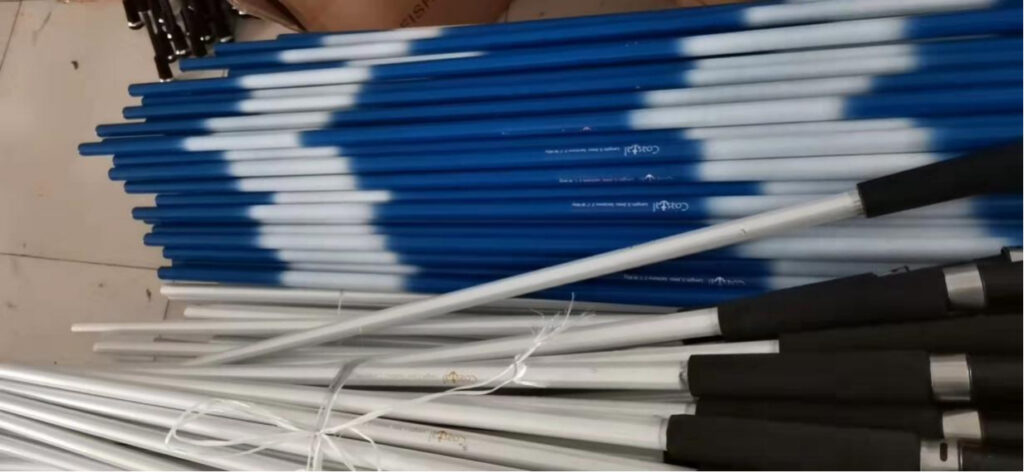
The rod blank is the main part of your rod, starting from the handle and moving towards the tip. Guide rails – usually metal, sometimes with plastic or ceramic padding to reduce friction on the line. The guides start after the rod handle and work their way up to the very tip of the rod. With the exception of baitcasting rods, the guides are generally smaller the closer you get to the tip of the rod.
Handle
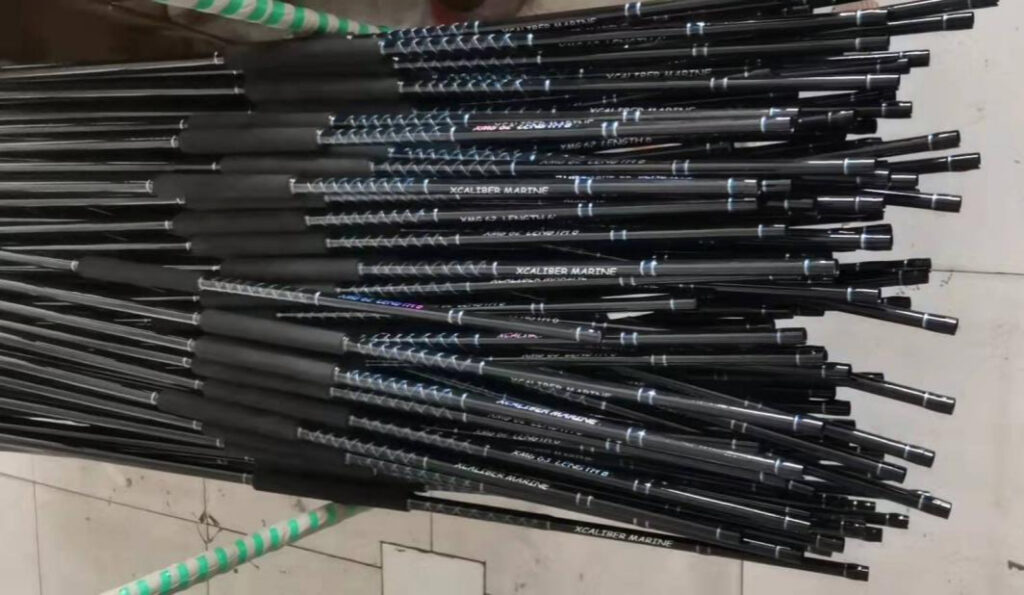
The strongest part of the rod, the bottom of the rod, is the handle, which consists of a blank encased in rubber, foam, plastic or cork and is the strongest part of the rod. Generally, the part of the blank covered at the bottom is considered the handle – including the reel seat.
This part of the rod is the most vulnerable to blows, and some of them are super durable – like UglyStik’s handles are legendary for being able to take abuse and last a long time.
Fishing rods with longer handles are better suited for long casts. Rods with shorter handles are not needed for long casts, such as bass or other freshwater lake or stream fishing.
Reel seat
The fishing rod reel is located in the seat. This makes sense, right? This is usually a plastic or metal area where the reel is securely attached to the rod and has swivel rings to lock the reel in place. It is recommended to check the tightness of these collars before you start fishing! Reels are expensive!
The Guides
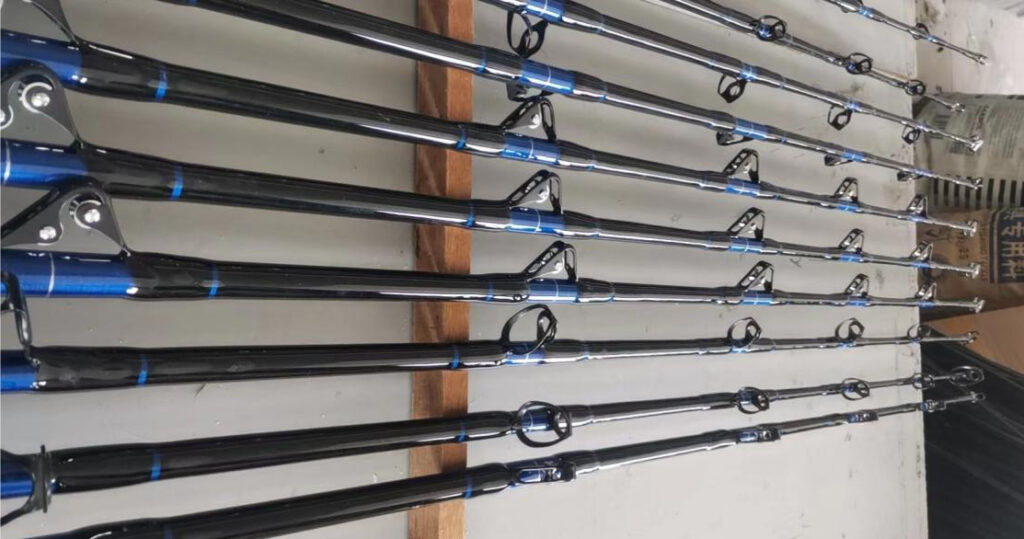
The guide eye keeps the line in a straight line and helps maximize casting distance. The guides are at the bottom on cast reels and at the top on bait reels. Guides on bait-style reels are almost always the same size.
Rod Tip
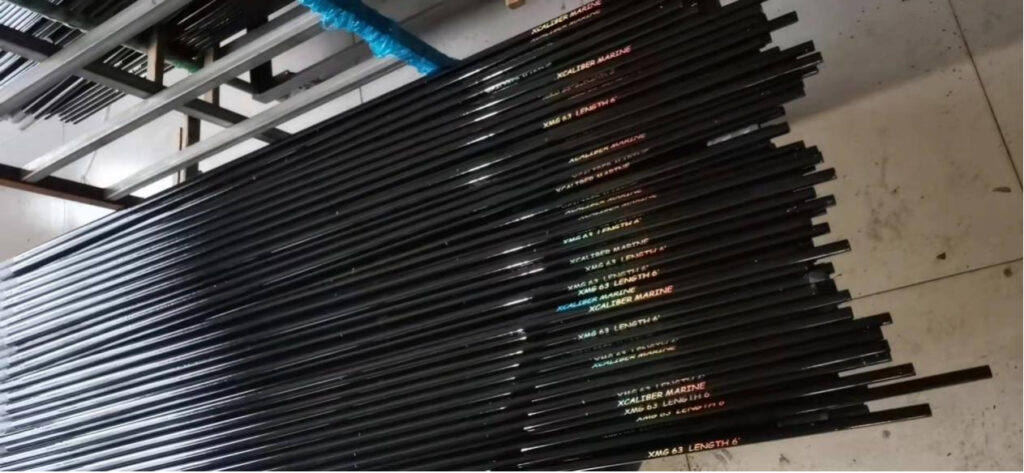
The fishing rod tip is important because it gives you a shock when a fish is nibbling on your bait or lure. Ideally, you will have a very flexible and responsive rod tip when fishing for small fish under 5 pounds. The faster you know a fish is on the other end of your line, the better chance you have of reeling it in with your rod.
Your rod is collapsible, then you will have two ferrules: a male and a female. This is where your rod will be put together for proper use. When attaching these two pieces, make sure the guides are aligned so that your line will have a straight plane of travel.
Graphite Rods
Probably most of the rods you find in stores and online are graphite rods. Graphite is used because it is very flexible, yet very strong. Graphite rods are very difficult to break, while fiberglass rods are almost impossible to break.
Choosing Rod Length
The fishing rod handle to the tip is the length of the rod. Most rods are between 5 and 10 feet in length. The most common rod size is about 7.5 feet. This is the sweet spot for most anglers looking for freshwater or saltwater fish from a boat, shore or dock.
If you need to cast far, such as from a dock for bluefish, choose a 9- to 10-foot rod and you’ll get a casting distance of 30-60 yards. Don’t forget to position yourself behind the wind when possible!
Slow action fishing rod
Slow-motion rods bend towards the handle and are better suited for pair fishing for larger sized fish such as big redfish, big snook, amberjack, cobia, grouper, mackerel, etc. In general, I like to use slow cranking rods for sea fishing because you never know what you are going to catch. It’s better to have a stronger, slower rod than a super light rod, especially when fishing for amberjack!
Rod Types
Spinning rods
Spinning rods are used with spinning reels. If you are just starting out, you are more likely to use a spinning reel. These are long-handled reels that have an open surface to turn the line into the guides from the side.
Spinning reels and rods are ideal for all types of fish. Some anglers use them for all types of fishing – even big fish like tuna and grouper.
The biggest difference between a spinning rod and a casting rod is the accuracy and skill required to master the system. Casting takes a little time to get used to it, but once you’ve mastered it, you’ll love it if the casting position is essential.
Casting Rods
The Teardrop casting rod has guide eyes on top optimized for very precise casting. On the boat, you may not need as much precision, especially if you’re towing.
Trolling Rods
These are very strong rods used for catching sailfish, kingfish, tuna, large grouper, and other massive fish. You can use a short, thick, fiberglass trolling rod or a heavy or ultra-heavy spinning rod for these fish.
Surf Rods
Normally, 9 foot and longer surf rods are ideal for fishing from shore because you can cast a long distance to reach some of the deeper areas on the beach. The bigger and stiffer the rod, the farther you can cast the bait. Surf rods are designed to handle heavy lures and sinkers, such as those needed for shark fishing and fishing for large redfish.
Bottom Line
Let’s say you want to catch a variety of fish on many different platforms – beach, boat, kayak, shore, wade fishing, pier, etc. – Just get a 7.5 foot long medium action UglyStik with a spinning casting reel and vary the strength of your braid depending on the size of the fish you are targeting.
You can catch big dorado with this rod and you can catch 1 lb trout with this rod.
If you are a generalist, get a generalist rod and think no more. If later you just can’t stand the fact that your rod doesn’t match the fish you’re catching, buy it later. Buy a rod that you can use for multiple types of fish first, and then specialize later.
Conclusion About Choose a Saltwater Fishing Rod
Chances are you only need one type of rod because you only do one type of fishing. If you’re only fishing for bass in a lake, you’ll need a bass rod. If you’re just wading out for alligator trout, you need a rod that can handle it.
You may only need 1 rod to cover many types of fishing wells, but not every type will be covered perfectly. That’s what most people do to save money. You should probably do the same. Shiny new gear is nice, but spend it on your lures, kayaks and boats!
FAQ About Choose a Saltwater Fishing Rod
①.What makes a rod good for saltwater?
Saltwater fishing rods are usually made out of graphite, fiberglass, or a combination of the two. Graphite rods are lightweight and sensitive, making them good for inshore fishing. Fiberglass rods on the other hand are more durable and better suited for offshore fishing.
②.Do you need a special rod for saltwater fishing?
Depending on the species, certain saltwater fish (such as marlin or sharks) can literally weigh thousands of pounds, which means that many saltwater rods have to be made much thicker and heavier than freshwater fishing rods. Heavy offshore saltwater rods are often made from fiberglass, which is more durable.
③.Can any fishing rod be used in saltwater?
Yes, you can use saltwater rods for freshwater and vice versa, but just make sure to rinse and dry your rods off after every trip (especially saltwater trips).
④.Is braid or mono better for saltwater fishing?
MONOFILAMENT SALTWATER FISHING LINE
Monofilament line is also more abrasion-resistant than braided line, has greater width-to-pound test and stretches more than saltwater braided line. The best mono will have a thin diameter and low memory, which means it doesn’t retain loops when it comes off the spool.
⑤.What are the different types of saltwater rods?
Saltwater rods are divided into two main categories or families; baitcasting and spinning, but technically there are numerous subdivisions such as bottom fishing, surfcasting, inshore, offshore and others. Baitcasting reels are positioned on top of a baitcasting rod, mounted in a reel seat.
⑥.Does braid color matter for saltwater fishing?
The TRUTH is…braided line color does not really matter! It is more of a visual reference for anglers to locate their baits and know where their lines are.
⑦.Is a 1 or 2 piece rod better?
The answer really comes down to fishing style. If you’re a bank fisherman or fishing from a smaller boat there are huge advantages to two-piece fishing rods. Under virtually any other circumstance the advantages of a one-piece rod far outweigh any disadvantages!
⑧.Can I use my freshwater fishing rod and reel in saltwater?
If you’re wondering if you can use a saltwater rod or reel in freshwater, the answer is yes. Freshwater won’t hurt your saltwater fishing rods and reels. Unfortunately, the opposite is not true. Saltwater can devastate freshwater rods and reels if you don’t quickly clean them thoroughly after use.
⑨.Do you use weights for saltwater fishing?
Fishing Sinkers and Saltwater Weights At A Glance
Fishing weights and saltwater fishing sinkers are used to quicken the pace at which your hook and lure sinks. You can also use sinkers or weights to increase the possible distance of your cast.
⑩.What are 7ft rods used for?
7-foot, medium-heavy casting rod
A medium-heavy rod will allow you to fish Texas rigs, smaller jigs, spinnerbaits, vibrating jigs, topwater lures, crankbaits and much more without sacrificing hardly any performance.

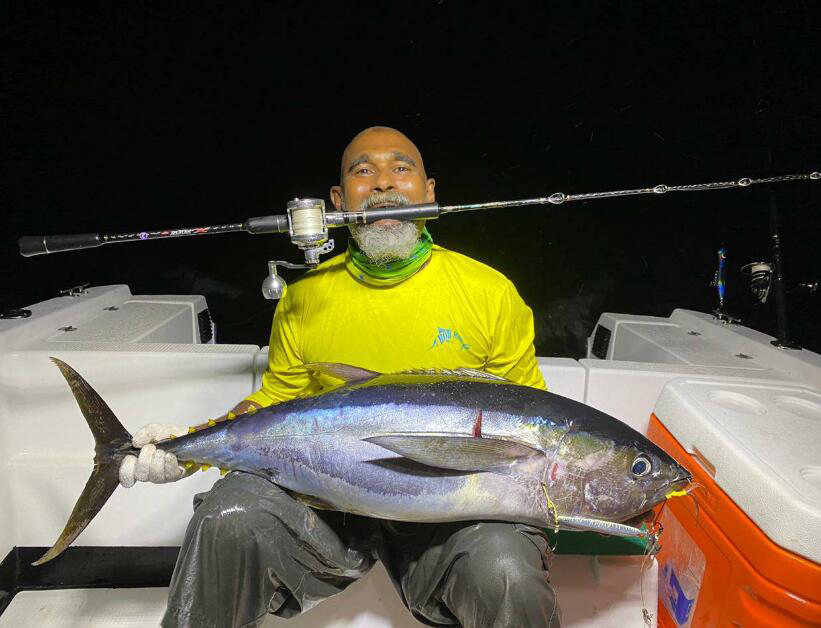
Very good article, very helpful to me!